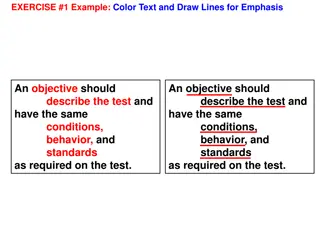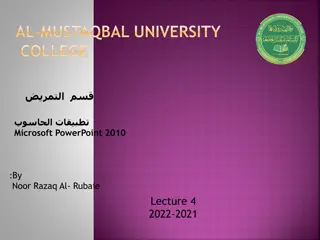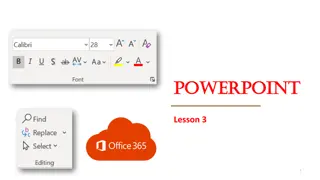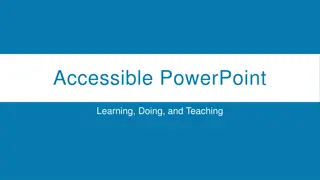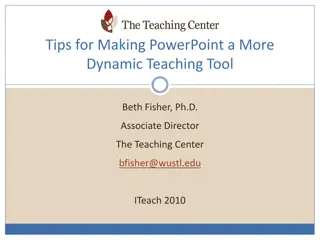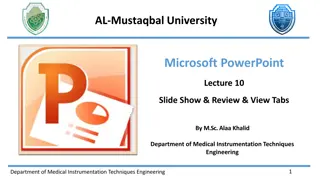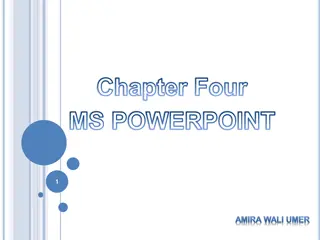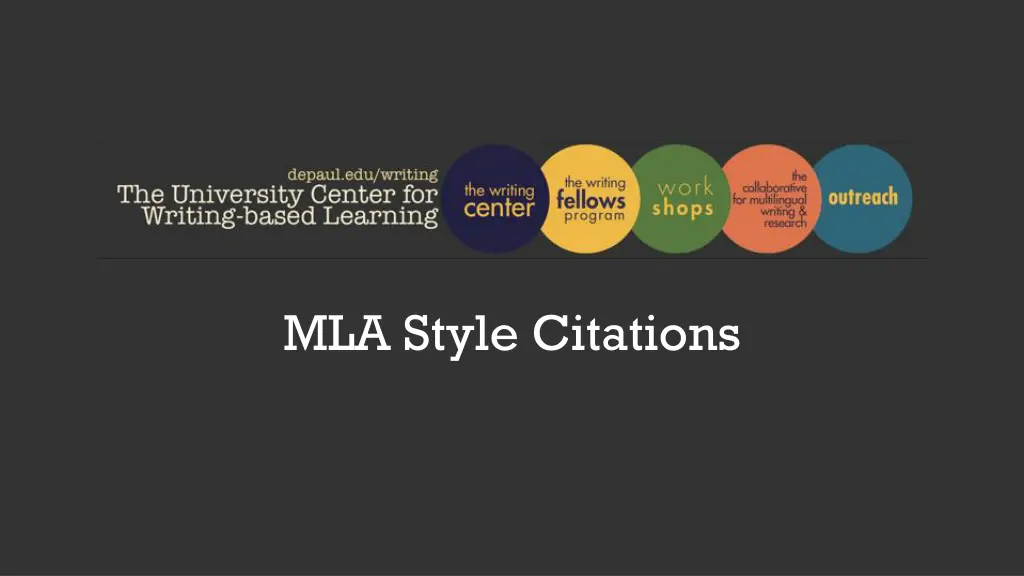
Mastering MLA Style Citations
Learn the importance of citing sources in academic writing, including summarizing, paraphrasing, and direct quoting in MLA Style. Understand why integrating sources enhances credibility and how to use signal phrases effectively. Explore the nuances of summarizing, paraphrasing, and using direct quotations in academic writing while following the MLA Citation Style.
Download Presentation

Please find below an Image/Link to download the presentation.
The content on the website is provided AS IS for your information and personal use only. It may not be sold, licensed, or shared on other websites without obtaining consent from the author. If you encounter any issues during the download, it is possible that the publisher has removed the file from their server.
You are allowed to download the files provided on this website for personal or commercial use, subject to the condition that they are used lawfully. All files are the property of their respective owners.
The content on the website is provided AS IS for your information and personal use only. It may not be sold, licensed, or shared on other websites without obtaining consent from the author.
E N D
Presentation Transcript
WORKSHOP GOALS Understand the importance of citing and documenting sources in academic writing Determine when to summarize, paraphrase, and/or directly quote in academic writing Practice citing sources using MLA Style
INTEGRATING SOURCES: WHY? Provides evidence for your argument and enhances credibility and persuasiveness Demonstrates your interaction with others in the field and their ideas Avoids plagiarism and allows readers to locate your sources http://unitproj.library.ucla.edu/col/bruinsuccess/03/02.cfm
INTEGRATING SOURCES: HOW? Whenever you use words, data, or ideas from another source in any of the following forms: Summary Paraphrase Direct quotation
USING SOURCES: SUMMARY Emphasizes points over details Reduces a large text into a smaller text, in your own words Fits original text into the context of your writing
USING SOURCES: PARAPHRASE Captures important details of a text in your own words Modifies the original language of a text to match the context of your writing
USING SOURCES: DIRECT QUOTATION Maintains the author s original phrasing word for word to: Display particularly poignant or articulate expression Highlight the author s opinion Demonstrate contrasting perspectives
SIGNAL PHRASES Signal phrases can reveal intention and credibility of sources Examples: As Yanovski and Yanovski noted Hoppins and Taveras, topical researchers, pointed out that Author McDuffie has offered an argument about this view:
MLA CITATION STYLE Typically used in Humanities (English, Religious Studies, etc.) Prioritizes the author s name as the owner of their ideas As indicated by signal phrases & in text citations
MLA IN-TEXT CITATION Signal Phrase In-text Citation: Didion describes that the night after her husband's unexpected death was the beginning of my year of magical thinking (33). Page number
MLA IN-TEXT CITATION With a signal phrase: Michael Paulson wrote in the New York Times, Odom hungered to join the Hamilton cast because he recognized the ambition of the lyrics, the appeal of the music, and the drama of the story. Without a signal phrase: Leslie Odom, the start of Hamilton, joined the show because he recognized the ambition of the lyrics, the appeal of the music, and the drama of the story (Paulson).
MLA CITATION STYLE If your text is located within another container (i.e.: database, anthology, etc.), add elements 3-9 at the end for each additional container. Core Elements Omit any irreleva nt elements 1 Author. 2 Title of Source. 3 Title of container, 4 Other contributors, Follow each element with the punctuation mark shown (unless it is the final element, then use a period!) 5 Version, 6 Number, 7 Publisher, 8 Publication date, 9 Location.
MLA CITATION STYLE Core Element Example: 1 Author. Joan Didion. Works Cited 2 Title of source. The Year of Magical Thinking. 3 Title of container, Didion, Joan. The Year 4 Other contributors, of Magical 5 Version, Thinking. Alfred A. 6 Number, Knopf, 2005. 7 Publisher, Alfred A. Knopf, 8 Publication date, 2005. 9 Location.
MLA CITATION: BLOCK QUOTES colon Indente d inch Parenthetical citation after the quote
CITATION PRACTICE Get into groups of 2-3. For each of the following sources, create a Works Cited entry in MLA format *Use the Purdue OWL if you need extra guidance!
From Google Books Printed 1965 URL: https://books.google.com/ books/about/Everything_Th at_Rises_Must_Converge.ht ml?id=d33C-NWNtUQC
CITATION CREATION: ANSWER O Connor, Flannery. Everything That Rises Must Converge. Farrar, Straus and Giroux,1965. Google Books, books.google.com/books/about/Everything_ That_Rises_Must_Converge.html?id=d33C- NWNtUQC.
CITATION CREATION: ANSWER Sturm, Douglas. Crisis in the American Republic: The Legal and Political Significance of Martin Luther King s Letter from a Birmingham Jail . Journal of Law and Religion, vol. 2, no. 2, Cambridge UP, 1984, pp. 309-324. JSTOR, www.jstor.org/stable/1051093.












